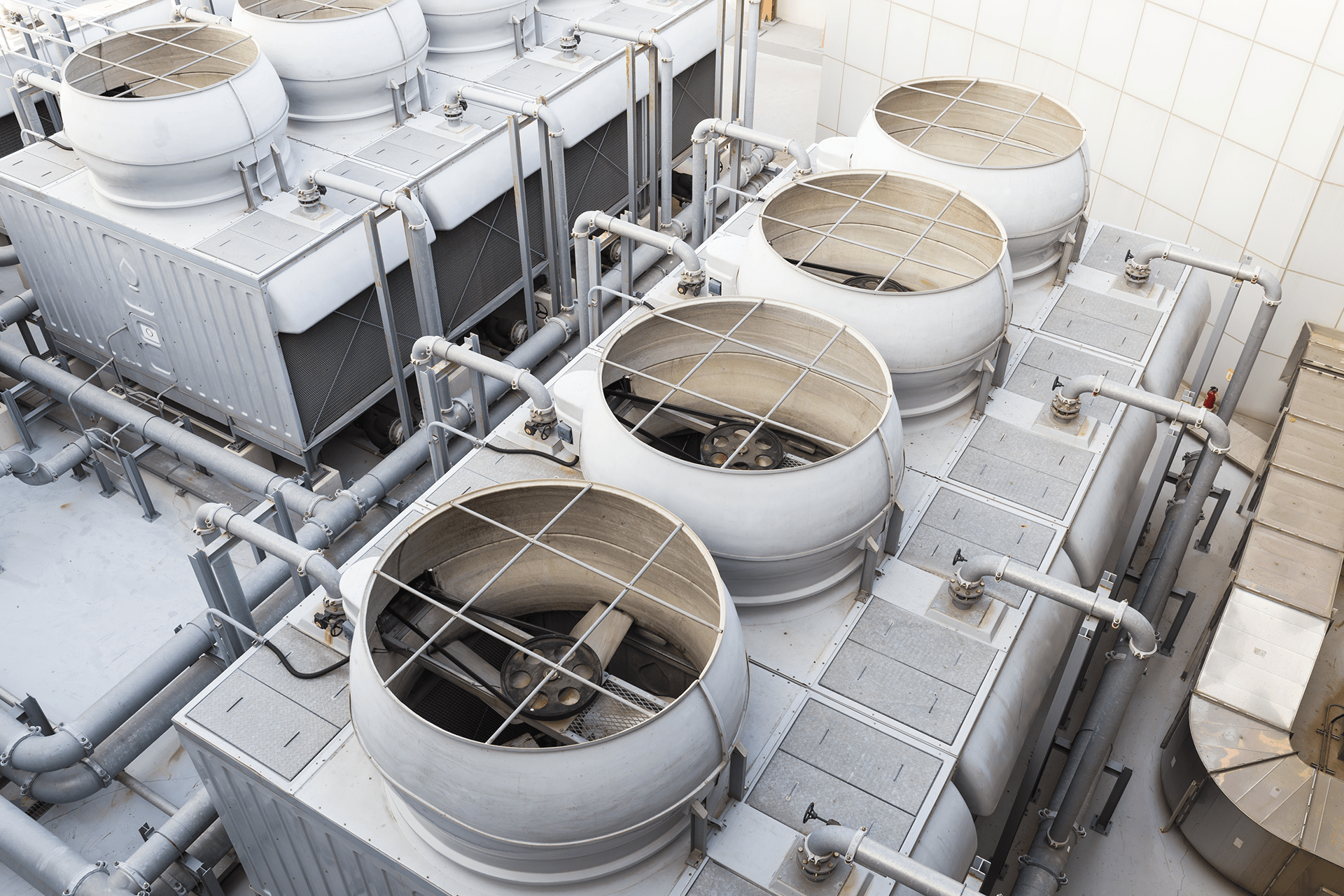HVAC equipment, particularly chillers, can be a major source of energy consumption. When building owners aim to lower their energy use, they often prioritize optimizing their chillers. However, this can be a difficult and complex task.
To optimize chillers and reduce energy consumption, understanding the basic dynamics of a chiller system is vital.
How To Calculate Optimum Chilled Water Supply Temperature
In general, as the chilled water supply temperature increases, energy consumption decreases. However, as the chilled water supply temperature increases, the chilled water pumps must circulate a higher volume of chilled water to achieve the same cooling load.
To find the optimum chilled water supply temperature, the two energy curves must be added together to find the total energy use of the whole chiller system. This will produce a “bowl-shaped” curve on a graph. When the total energy use is at a minimum, this is the optimal chilled water supply temperature. This only considers the power usage of the chilled water plant.
Optimizing Energy Consumption For Larger Chilled Water Systems
Larger systems are more complex—if there are multiple buildings in a system, there may be secondary loop pumps in the individual buildings. These secondary pumps must work harder to provide an increased flow rate.
We would also have to consider the increased fan power needed by the fan coil units or air handling unit if the fans must run more often to achieve the temperature setpoints with a higher chilled water temperature. This adds a “building energy component”, which also must be accounted for and added to the total energy of the system for an accurate energy model.
To determine the optimum supply water temperature more accurately, the model has to include the chillers, pumps and building systems to calculate the energy curve. This can be a complex task, as aging, fouling and other changes may occur over time. Multiple chiller plants are even more complex. Building systems are also very complex, as there are no “factory” baseline models to use as a starting point, and the combinations are endless. Most commercial chiller optimization programs do not model the buildings.
Using An Algorithm To Optimize HVAC Energy Consumption
An alternative way to determine operating temperature is to apply an “intelligent reset” algorithm. This algorithm works by adjusting the supply water temperature slightly, and notes the impact on the total energy consumption. However, the optimum chilled water supply temperature is not a fixed point. It will vary continuously due to many factors, such as building load and weather conditions. The intelligent reset algorithm will react to these changes and find a new optimum supply temperature. Carrier’s patented algorithm utilizes this algorithm in its own chillers.
If water-cooled chillers are being used, there is a similar trade-off taking place on the condenser water side. In general, if you lower the temperature of the condenser water as it’s supplied to the chiller, the lift required by the compressor decreases, thus the amount of energy used by the chiller will be reduced. However, this means the cooling tower must work harder. The closer the condenser water supply temperature approaches this wet bulb temperature, the harder the fans and circulating pumps in the cooling tower must work.
This approach temperature can be graphed against the energy use of the chiller and cooling tower, providing a similar bowl-shaped curve as we have seen before. This can also be optimized with an intelligent reset algorithm to find the optimal cooling tower approach temperature. To optimize both the chilled water system and the condenser water system, we must run the two optimization programs sequentially.
Conclusion & Case Study
The complete implementation of this optimization system requires energy measurement of every component in the chilled water system. However, if only a certain number of components are measured, the algorithm will optimize whatever is metered. Carrier’s Chiller System Optimizer can therefore model the energy usage as accurately as possible with complete system data, but can also produce a model with a more limited set of data. It is a very capable tool regardless of the level of information that is available.
A field test was done at Williams College in Massachusetts to showcase the effect of the intelligent reset algorithm. The system had three parallel 500-ton variable flow chillers, but due to weather conditions the system ran on one chiller most of the time (occasionally utilizing a second chiller). To provide a meaningful comparison during this period, the chiller optimization was enabled one day and disabled the next. The optimizer reduced energy consumption by 11.23%. After the first day of implementation, it consistently outperformed the non-optimized system.
If you have any more questions about optimizing chilled water systems, get in touch with one of our HVAC experts today—we’d be happy to help!


